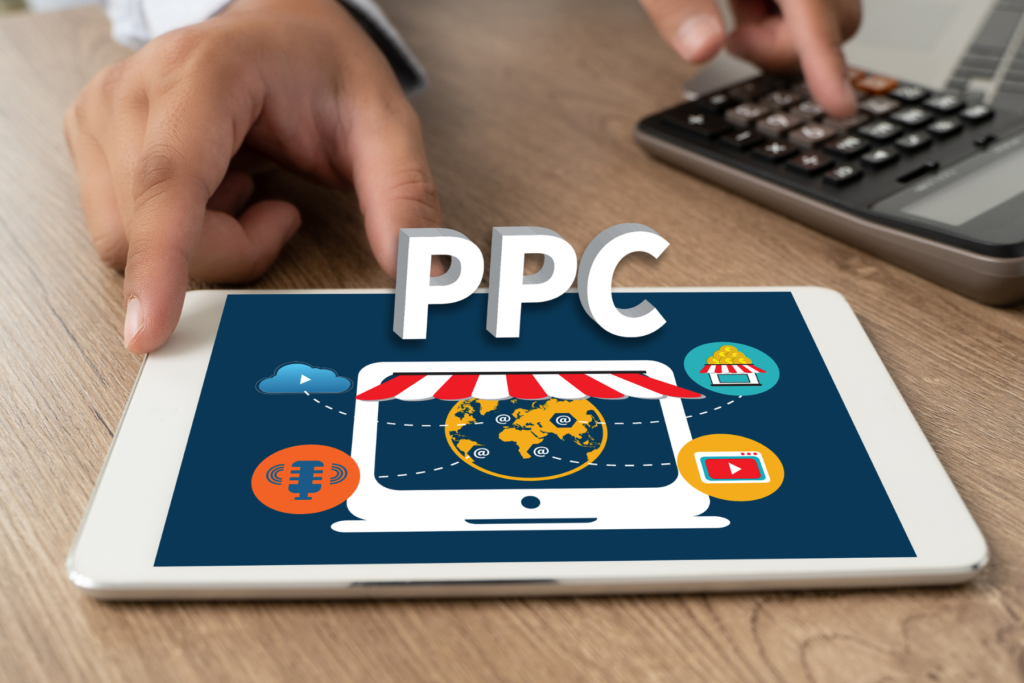Pay-Per-Click (PPC) marketing is a powerful digital advertising strategy that helps businesses drive targeted traffic and achieve measurable results. By paying only when users click on your ad, PPC offers a cost-effective way to reach your audience and boost your ROI. Whether you’re a small business or a multinational corporation, understanding the fundamentals of PPC can help you harness its potential.
What is PPC Marketing?
PPC is an online advertising model where advertisers pay a fee each time their ad is clicked. Unlike organic traffic, PPC allows you to “buy” visits to your website, ensuring that your message reaches the right people at the right time.
Popular Platforms for PPC:
- Google Ads: The most widely used platform, offering ads in search results, YouTube, and partner sites.
- Microsoft Ads: Similar to Google Ads but focuses on Bing’s search engine users.
- Social Media Platforms: Facebook, Instagram, LinkedIn, and Twitter offer PPC advertising to target users based on demographics, interests, and behaviors.
How PPC Works
1. Keyword Research
Keywords are the foundation of PPC. Advertisers bid on keywords they believe their target audience will use when searching online. Tools like Google Keyword Planner and SEMrush help identify relevant keywords with high search volume and low competition.
2. Ad Auctions
PPC platforms use auctions to determine which ads are displayed. The key factors include:
- Bid Amount: How much you’re willing to pay per click.
- Quality Score: A measure of the relevance and quality of your ad and landing page.
- Ad Rank: A combination of your bid and Quality Score that determines your ad’s placement.
3. Ad Formats
PPC offers diverse ad formats, including:
- Search Ads: Appear at the top of search engine results pages (SERPs).
- Display Ads: Visual ads shown on websites, apps, or YouTube.
- Shopping Ads: Product-specific ads for e-commerce.
- Remarketing Ads: Target users who have previously interacted with your website.
Benefits of PPC Marketing
1. Immediate Results
Unlike SEO, which takes time to build, PPC can drive traffic and conversions as soon as your campaign goes live.
2. Targeted Reach
PPC allows you to target users based on keywords, location, demographics, device type, and more.
3. Measurable ROI
With analytics tools, you can track clicks, impressions, conversions, and revenue, enabling data-driven decision-making.
4. Budget Control
PPC platforms let you set daily and campaign-level budgets, ensuring you never exceed your spending limit.
5. Brand Visibility
Even if users don’t click your ad, appearing at the top of search results boosts brand recognition.
Steps to Build an Effective PPC Campaign
1. Define Your Goals
Determine what you want to achieve:
- Increase website traffic
- Generate leads
- Drive sales
- Boost brand awareness
2. Perform Keyword Research
Identify keywords that align with your goals. Focus on:
- Short-Tail Keywords: Broad terms with high search volume.
- Long-Tail Keywords: Specific phrases with lower competition but high intent.
3. Craft Compelling Ads
Your ad copy should:
- Address user pain points.
- Include a strong call-to-action (CTA).
- Highlight unique selling points (USPs).
4. Optimize Landing Pages
Ensure your landing pages are:
- Relevant to the ad content.
- Mobile-friendly and fast-loading.
- Clear with actionable CTAs.
5. Set Up Conversion Tracking
Use tools like Google Tag Manager and Facebook Pixel to track key metrics such as purchases, form submissions, or phone calls.
6. Monitor and Optimize
Regularly review your campaign’s performance and adjust:
- Keywords
- Bids
- Ad copy
- Targeting settings
Common PPC Mistakes to Avoid
- Ignoring Negative Keywords: Excluding irrelevant keywords prevents wasted spend.
- Setting Unrealistic Budgets: Ensure your budget matches the competitiveness of your keywords.
- Not Testing Ads: A/B test headlines, images, and CTAs to find what resonates with your audience.
- Focusing Only on CTR: Clicks don’t always equate to conversions; focus on ROI and conversion rates.
PPC Metrics to Track
1. Click-Through Rate (CTR):
Measures how often users click your ad. A high CTR indicates relevance.
2. Quality Score:
Reflects the relevance and quality of your ad, keyword, and landing page.
3. Cost Per Click (CPC):
The amount you pay per click. Aim to reduce CPC while maintaining quality.
4. Conversion Rate:
The percentage of users who complete a desired action after clicking.
5. Return on Ad Spend (ROAS):
Evaluates the revenue generated compared to the cost of ads.
Future Trends in PPC Marketing
- AI and Automation: Automated bidding and ad creation tools are becoming standard.
- Voice Search Optimization: Ads tailored for voice queries will grow in importance.
- Video Ads: Platforms like YouTube and TikTok offer dynamic opportunities for engagement.
- Audience Targeting: Enhanced personalization through advanced algorithms.
Final Thoughts
PPC marketing is a highly effective way to grow your business, provided it’s executed strategically. By defining your goals, selecting the right keywords, crafting compelling ads, and analyzing performance, you can maximize your campaign’s success. With continuous optimization and an eye on emerging trends, PPC can drive lasting results for your brand.
